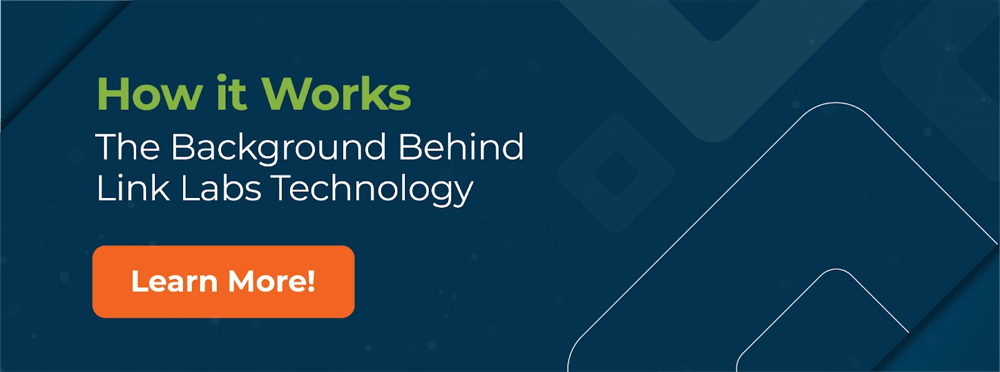So you’re considering implementing a Real-Time Location System (RTLS) solution to address your asset tracking needs. But how do you know where to start? After all, there are several RTLS providers out there, and if you’re not familiar with the aspects of a good system, it can be difficult to understand what to look for. To help you on your journey, here are 5 factors to consider when choosing an RTLS provider.
Understanding Your Asset Tracking Needs
The first step to selecting an RTLS provider that’s right for you is to clearly identify your business needs. RTLS solutions help resolve asset tracking and monitoring problems. It’s important to have a clear grasp of the problem and desired outcome from the RTLS provider before implementation. Here are three factors you should consider:
- Usage: What problem are you trying to solve with an RTLS solution? Are you trying to track inventory, equipment, vehicles, personnel, or something else?
- Scale: How many assets do you want to track, and over how large of a space are you intending to track them? This includes consideration of whether you want to track assets indoors, outdoors, or across both.
- Budget: How much are you willing or able to pay for a solution that meets your needs?
Join the AirFinder Difference!
- Innovation. Organizations can be freed up to innovate and bring more impactful products and services to market.
- Profitability. Increased profitability provides new opportunities to innovate and improve valuation.
- Digital Transformation. Discover competitive advantages, new revenue opportunities, improved customer relationships, and increased efficiency.
What to Consider When Choosing an RTLS Provider
Industries and Use Cases
One of the most important things to evaluate when choosing an RTLS provider is whether they work within your industry and/or a use case that reflects your needs. Most providers will display this information directly on their website, often with pages devoted to displaying their typical work within an industry or use case.
However, if a provider doesn’t display your industry or use case, this doesn’t necessarily mean that they’re a bad fit. They might conflate multiple industries or use cases. Alternatively, they might not display industries or use cases that they don’t work with as often or that it is new enough that they haven’t published a dedicated web page yet. When in doubt, remember that it can’t hurt to reach out and ask!
Tags and Technology
It’s also important to consider what tags and RTLS technology that a given solution utilizes. Considering types of tags is less about certain options being inherently better, and more about making sure that a provider has an option that suits your needs while aligning with your budget. For instance, you might want a tag that’s smaller and less obtrusive, even if that means a shorter battery life. On the other hand, you might want a tag with a battery that lasts longer, and therefore not mind that it’s a little heftier. Depending on your use case, you might even prefer a wearable tag.
RTLS technologies are a little more complicated, especially considering that there are a lot of unique options. Again, the real choice is whether a provider offers a technology whose strengths align with your needs. Whether that means a power-saving technology for indoor tracking, a technology that can track between locations, or a combination that allows for seamless tracking both indoors and outdoors is determined by your goals for your RTLS system.
Installation and Integration
Depending on your industry or intended use case, it’s especially important to get your RTLS solution up and running as soon as possible. When considering an RTLS provider, you should consider how long it’s going to take to properly install the system. While this requires time regardless, some systems are easier and quicker to install than others, letting you go back to normal business with your new and improved asset tracking solution.
A factor that might affect installation speed is integration capabilities. If you already have a system in place, certain RTLS providers can integrate their technology with the existing software. Not only does this typically cut down on overall installation time, but it can also reduce both the cost and the learning curve that comes with using a new software.
Cost and Scalability
If it’s important to consider your budget, then of course it’s important to consider the cost of implementing a given solution. Costs may include installation fees, costs for tags and other hardware, service fees, and any number of other charges depending on the provider in question. If you can’t find pricing breakdowns online, be sure to ask, and make sure to directly address any hidden fees.
Cost is in part affected by scalability. Many providers have a minimum charge, and depending on your needs, that minimum might be overpriced for the scale of your implementation. Scalability also becomes a factor down the road. If your business grows or if you decide to expand the system at a later date, it’s best to know what expansion pricing looks like.
Customer Service and Ease of Contact
One factor that may be easy to forget about when considering RTLS providers is the quality of their customer service. When implementing an RTLS system, it’s with the understanding that you will be working with the provider as you continue to utilize the system. With this in mind, it’s important to evaluate both the quality of a provider’s customer service and how easy it is to get in contact with them.
In many ways, pursuing an asset management solution through an RTLS provider is a partnership, wherein both parties must remain in contact to ensure that needs are met and future problems are addressed. With this in mind, the importance of quality customer service cannot be overstated.
Helping You Find an RTLS Solution that Meets Your Needs
Here at Link Labs, we understand the importance of options, affordability, and open communication as we help our customers find the right RTLS solution for their asset management needs. To learn more about Link Labs’ solutions for you, book a demo today.




